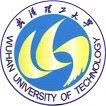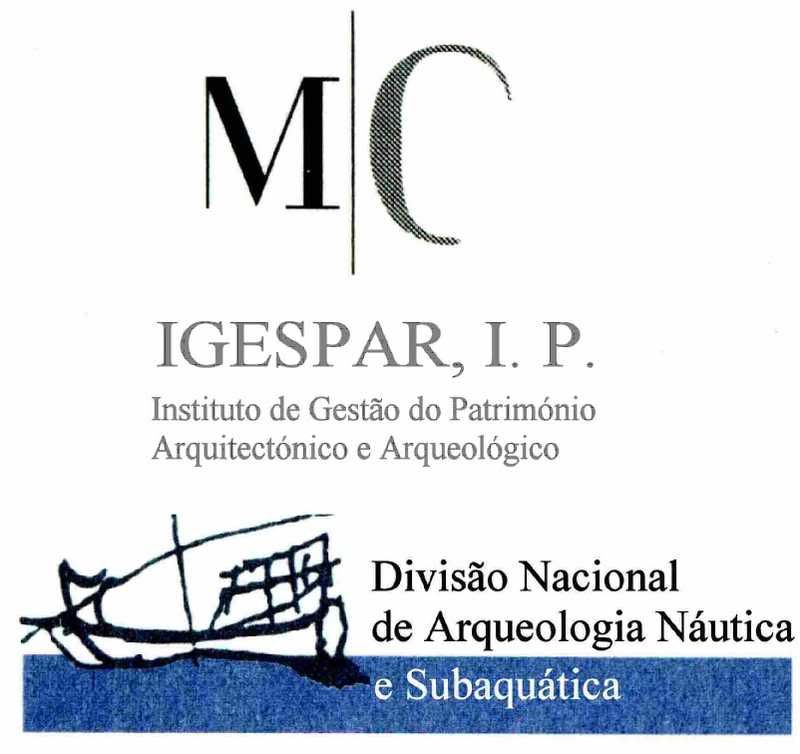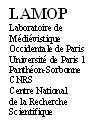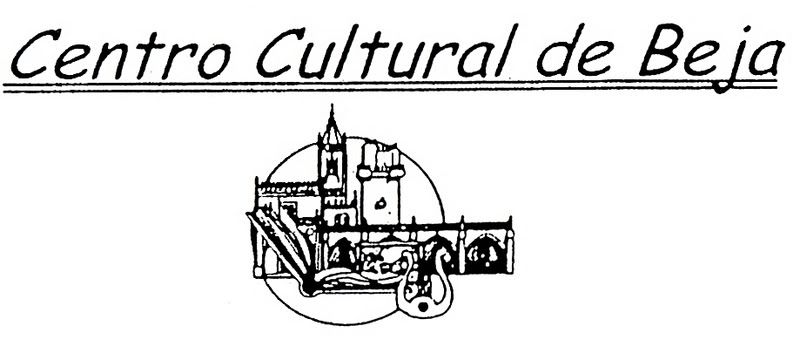February 16, 2008
Home <-
References / Bibliography
References quoted in the text above:
-Xu Yingfan (1985): Origin and Technique of “Gua-ju” (Iron Cramp) Connections in Wooden Craft Construction. Special of Ship Engineering Marine History Research Transactions of CSNAME-Marine History Research Group Nº1, Shanghai (quoted in Green, Jeremy, 2002).
-Xi Longfei, Dun He (1989): Study on restoration of Nº 2 Penglai ancient ship. Penglai ancient ship and Dengzhou ancient port, Dalian (en chinois). Dalian Marine University Press
-Xi Longfei, He Guowei (1979): Research on the Quanzhou Bay Unearthed Song Ship and Her restored Dimensions, Shipbuilding in China, nº2 (in chinese).
-Xi Longfei (2005): The Documents and Relics of Zheng He’s Treasure Ships (in chinese), Proceedings of International Academic Forum in Memory of the 600th Anniversary of Zheng He’s Expedition, Nanjing, China: 476-483.
-Xi Longfei (2004): A History of Science and Technology in China. Transportation edition (em chinês). Beijing Science Press, Beijing.
-Xi Longfei, Chalmers, D.W. (2004): The Rise and Decline of Chinese Shipbuilding in the Middle Ages. International Journal of Maritime Engineering. The Royal Institution of Naval Architects. London.
- Xi Longfei, Xin Yuanou (1991): Preliminary Research on the Historical Period and Restoration design of the Ancient Ship Unearthed in Penglai, Proceedings International Sailing Ships History Conference, Shanghai, 1991: 225-236.
-Xi Longfei, Dun He (1989): Study on restoration of Nº2 Penglai ancient ship. Penglai ancient ship and Dengzhou ancient port, Dalian (in chinese). Dalian Marine University Press
-Xi Longfei, He Guowei (1979): Research on the Quanzhou Bay Unearthed Song Ship and Her restored Dimensions, Shipbuilding in China, nº2 (in chinese).
-Williams, F.G.. (2006): “Re: Dimensions of Cheng Ho’s largest ships”, Mariner’s Mirror, 92: 103-105
-Wegener Sleeswijk, A. (2004): “The overall dimensions of Cheng Ho’s largest ships”, Mariner’s Mirror, 90: 305-308
-Wegener Sleeswijk, A. (2005): “Maximum lengths of Cheng Ho’s ships”, Mariner’s Mirror, 91: 603-605
-Wegener Sleeswijk, A (1998): The Liao and the displacement of ships in the Ming Navy. The Mariner’s Mirror, 82, nº 1: 3-13.
-Wang Min, Xi Longfei, Gong Changqi (2006): Research about Ship’s Form’s Plotting & Recovering of Nº 3 Penglai Ancient Ship (in chinese), Proceedings International Symposium of Penglai Ancient Ship, Penglai, China: 107-112.
-Vong, Ana (2006): A construção naval na China antiga, Oriente (Fundação Oriente, Lisboa ), nº 16.
-Varadarajan, Lotika (1998): Sewn Boats of Lakshadweep, National Institute of Oceanography, Panaji, Goa.
-Varadarajan, Lotika (1994): Seafaring and Shipbuilding Technology of Lakshadweep. International Seminar on Techno-Archaeological Persperctives of Seafaring in the Indian Ocean, New-Delhi (quoted in Green, Jeremy, 2002).
-Varadarajan, Lotika: Boat Typology and Fishing Communities – Bengal, National Institute of Ocean Technology, Manohar, New Delhi (forthcoming).
-Varadarajan, Lotika: Bengal Boat Architecture – Symbol and Belief, in B.R. Mani, Alok Tripathi, eds, Maunya, Expressions in Indian Art, Shri M.C.Joshi Commemoration Volume, New Delhi (forthcoming).
-Vong , Ana (Huang Jiexian) (2005): Zhu Di and Zheng He’s Expeditions, Proceedings of International Academic Forum in Memory of the 600th Anniversary of Zheng He’s Expedition, Nanjing, China: 329-334.
-Strachan, Shirley M. (1986): A research design for European influenced shipbuilding in India and Southeast Asia: the Sydney Cove (1797). Bulletin of the Australian Institute of Maritime Archaeology, 12.2: 37-43.
-Steffy, J. Richard (1994): Wooden Shipbuilding and the Interpretation of Shipwrecks, College Station: Texas A&M University Press.
-Scheuring, Hans Lothar (1987): Die Drachenfluß-Werft von Nanking. Das Lung-chiang ch’uan-ch’ang chih, eine Ming-zeitliche Quelle zur Geschichte des chinesischen Schiffbaus. Heidelberger Schriften zur Ostasienkunde. Band 9. Haag+ Herchen. Frankfurt/Main. 417 p.
-Sarsfield, John Patrick (1988): Survival of pre-sixteenth century Mediterranean lofting techniques in Bahia, Brasil, in Filgueiras (ed.), BAR International Series 438, vol. I, 1988: 63-86.
-Rodrigues, Paulo; Alves, Francisco: Rieth, Eric; Castro, Luis Filipe V. (2001): L’épave d’un navire de la deuxième moitié du XVème siècle / début du XVIème, trouvée au Cais do Sodré (Lisbonne). In F. Alves, ed. Proceedings International Symposium on Archaeology of Medieval and Modern Ships of Iberian-Atlantic Tradition. Hull remains, manuscripts and ethnographic sources: a comparative approach. Trabalhos de Arqueologia, 18. Instituto Português de Arqueologia: 347-380. (Full text available in pdf on the Internet)
-Rival, Michel (1991): La Charpenterie navale romaine (Matériaux, Méthodes, Moyens). Travaux du Centre Camille Jullian 4 (Aix-en-Provence). Éditions du CNRS. Paris. 333p.
-Rieth, Eric (2007): Les dernières goélettes. Les Pinisis d’Indonésie. Errance. Paris. 119 p.
-Rieth, Eric (2000): Les «cahiers manuscrits» d’Etienne Sigaut: jonques et sampans chinois. Techniques et Culture, (Paris) 35-36: 141-174.
-Rieth, Eric (2000): Atlas des voiliers et pirogues du monde au début du XIXe siècle. Essai sur la construction navale des peuples extra-européens, de l’amiral Pâris (1843). Éditions du Layeur. Paris
-Rieth, Eric (1998): "Construction navale à Franc-Bord en Méditerranée et Atlantique (XIVe-XVIIe siècle) et Signatures Architecturales. Une Première Approche Archéologique", Méditerranée Antique. Pêche, navigation, commerce, Rieth, Eric, (Ed.), Comité des Travaux Historiques et Scientifiques, Paris.
-Rieth, Eric (1998): Les éléments transversaux de la charpente (chap.), in Palou, Hugo, Rieth, Eric, Izaguirre, Manu, Jover, Anna, Nieto, Xavier, Pujol, Marcel, Raurich, Xim, Apestegui, Cruz : Excavaciones Arqueològiques Subaquàtiques a Cala Culip.2. Culip VI. Monografies del CASC 1. Museu d’Arqueologia de Catalunya. Centre d’Arqueologia Subaquàtica de Catalunya: 137-189.
-Rieth, Eric (1995): Note sur un album du commandant Audemard. Neptunia, 197, 1: 17-20.
-Rieth, Eric (1993): Voiliers et pirogues du monde au début du XIXe siècle. Paris, Du May.
-Reed, Edward J. (1867): on certain cases of weakness in iron ships. Transactions of the Institution of Naval Architects: 27-41.
-Prehn, Richmond T. (2002): Hogging in Ancient Egypt, in The Scroll, The Journal of the Ancient Egypt Studies Association (AESA), Portland, Oregon (reprint in The Ostracon , The Journal of the Egyptian Study Society, Denver, Colorado, 14.1. Winter 2002-2003) (text available in pdf on the Internet)
-Pomey, Patrice, Rieth, Eric (dir.) (1999): Construction navale maritime et fluviale. Approches archéologique, historique et ethnologique, Actes du 7e Colloque International d’Archéologie Navale - 7th International Symposium on Boat and Ship Archaeology, île Tatihou, 1994. Archaeonautica 14, 1998. Paris, 335 p.
-Pomey, Patrice (1998): Principes et méthodes de construction en architecture navale antique, in « Navires et commerces de la Méditerranée antique. Hommage à Jean Rougé», Cahiers d’Histoire, XXXIII, 3-4 : 397-412.
- Oliveira, F. (1580/1991) – O Livro da Fábrica das Naus. Lisboa: Academia da Marinha.
-Nomoto, N., Ishii K. (1991): A Historical Review on Ships of Japanese Tradition. In MAHIR 91 China Conference Paper. Shanghai 1991.Proceedings International Sailing Ships History Conference. Shanghai Society of Naval Architecture & Marine Engineering. Marine History Researchers’ Association of CSNAME: 97-112.
-Moortel, Aleydis Van de (1994): Functional Analysis of a Small Zuyderzee Cog, in Christer Westerdahl, editor : Crossroads in Ancient Shipbuilding. Proceedings of the Sixth International Symposium on Boat and Ship Archaeology. Roskilde 1991. ISBSA 6, Oxbow Monograph 40:117-120.
-Mills, J.R. (1960): “The largest Chinese junk and its displacement”, Mariner’s Mirror, 46: 147-148.
-McGrail , Sean (2001): Boats of the World (from the Stone Age to Medieval Times). Oxford University Press. 480 pages.
-McGrail , Sean (2001): Portuguese-derived ship design methods in southern India ? ? In F. Alves, ed. Proceedings International Symposium on Archaeology of Medieval and Modern Ships of Iberian-Atlantic Tradition. Hull remains, manuscripts and ethnographic sources: a comparative approach. Trabalhos de Arqueologia, 18. Instituto Português de Arqueologia: 119-129. Abstract http://www.ipa.min-cultura.pt/pubs/TA/folder/18/120.pdf (full text available in pdf format on the Internet).
-McGrail , Sean, Kentley, Eric (1985): Sewn Plank Boats. Archaeological and Ethnographic papers based on those presented to a conference at Greenwich in November, 1984. National Maritime Museum, Greenwich, Archaeological Series nº 10. BAR International Series 276.
-McCarthy, Michael (1998): The study of iron steamship wrecks: Is it archaeology? Bulletin of the Australian Institute for Maritime Archaeology, 22: 99-108.
-Martins, Adolfo Silveira (2001): A Arqueologia Naval Portuguesa (Séculos XIII-XVI). Uma aproximação ao seu estudo ibérico, Lisboa, Universidade Autónoma de Lisboa.
-Mantas, Vasco (1995): Tecnologia naval romana. Academia de Marinha. Lisbon.
-Manguin, Pierre-Yves (2000): Les techniques de construction navale aux Maldives originaires de l’Asie du Sud-Est. Techniques et Culture, (Paris) 35-36: 21-47.
-Manguin, Pierre-Yves (1985): Sewn-plank craft of South East Asia, in Mc Grail and Kentley (eds): 319-343.
-Manguin, Pierre-Yves (1985): Late Medieval Asian Shipbuilding in the Indian Ocean. Moyen Orient & Océan Indien 2 (2): 1-30 (quoted in Green, Jeremy, 2002).
-Manguin, Pierre-Yves (1984): Sewn-plank Craft of South-East Asia. A preliminary study. Second International Conference on Indian Ocean Studies, Perth, Western Australia. Section E, Maritime Studies: Shipping, Trade and Port Cities (quoted in Green, Jeremy, 2002).
-Manguin, Pierre-Yves (1984): Relationship and Cross-Influence Between Southeast Asian and Chinese Shipbuilding Traditions. SPAFA Consultative Workshop on Research on Maritime Shipping and Trade in Southeast Asia. Indonesia (quoted in Flecker, Michael (2001): The Bakau wreck: an early example of Chinese shipping in Southeast Asia. International Journal of Nautical Archaeology, 30.2: 230)
-Loureiro, Vanessa (2006): O Padre Fernando Oliveira e o Liuro da Fabrica das Naos, Revista Portuguesa de Arqueologia, vol. 9, nº 2: 367-379. Link at http://www.ipa.min-cultura.pt/
-Loureiro, Vanessa: From the shipwreck to the shipyard. The 16th century Arade 1 shipwreck (Algarve/Portugal) and the Iberian shipbuilding tradition: a first approach. Proceedings of the 13th Annual Meeting of European Association of Archaeologists. EAA, Zadar (forthcoming).
-Loureiro, Vanessa, Alves, J. G.: The Arade 1 Shipwreck: Preliminary Results of the 2004 and 2005 Field Seasons. International Journal of Nautical Archaeology. Balckwell Publishing, 2008 (forthcoming).
-Loureiro, Vanessa: Épaves et espace culturel. L’exemple de l’épave du XVIe siècle Arade 1 (Algarve, Portugal) et des traditions architecturales Ibériques : une première approche. Actes du Séminaire De la culture matérielle à l’identification de l’espace culturel. Université de Paris I – Panthéon Sorbonne, Paris (forthcoming).
-Loureiro, V.: The Arade 1 shipwreck: naval construction in local shipyards vs. Portuguese nautical treatises. Proceedings of the 2nd International CPNS Conference on Portuguese Maritime History and Archaeology. CPNS, Mossel Bay (forthcoming).
-Loewen, Brad (2001): The structures of Atlantic shipbuilding in the 16th century. An archaeological perspective. In F. Alves, ed. Proceedings International Symposium on Archaeology of Medieval and Modern Ships of Iberian-Atlantic Tradition. Hull remains, manuscripts and ethnographic sources: a comparative approach. Trabalhos de Arqueologia, 18. Instituto Português de Arqueologia: 241-345.
-Li Guo-Qing (1989): Archaeological evidence for the use of “chu-nam” on the 13th century Quanzhou ship, Fujian Province, China. International Journal of Nautical Archaeology, 18.4: 277-283. (text available in pdf on the Internet)
-Li Bangyan (1991): Notes on the Design of Replica Models of Zheng He Treasure Ship Fleet, in MAHIR 91 China Conference Paper. Shanghai 1991.Proceedings International Sailing Ships History Conference. Shanghai Society of Naval Architecture & Marine Engineering. Marine History Researchers’ Association of CSNAME: 330-340.
-Lee Chang-Euk (1991): A study on the structural and fluid characteristics of a rabetted clinker type ship (the sunken ship salvaged off Shinan). In MAHIR 91 China Conference Paper. Shanghai 1991.Proceedings International Sailing Ships History Conference. Shanghai Society of Naval Architecture & Marine Engineering. Marine History Researchers’ Association of CSNAME: 154-168.
- Lavanha, J. B. (1996) – Livro Primeiro da Architectura Naval. Lisboa: Academia de Marinha.
-Kumar, H.; Varadarajan, L. (2000): Ap, the canoe of Chowra Island. Techniques et Culture, (Paris) 35-36: 85-120.
-Kim, Zae Geun. (1986): Study on the Structure of a Wreck Salvaged off the Wando Island. Journal of National Academy of Sciences, Seoul, vol. 25. n. v.
-Kim, Zae Geun (1991): The Wreck excavated for the Wando Island. In MAHIR 91 China Conference Paper. Shanghai 1991.Proceedings International Sailing Ships History Conference. Shanghai Society of Naval Architecture & Marine Engineering. Marine History Researchers’ Association of CSNAME: 56-58.
-Keith, Donald H.; Buys, Christian (1981): New light on Medieval Chinese seagoing ship construction. International Journal of Nautical Archaeology and Underwater Exploration, 10.2; 119-132.
-Kawasaki, Akitoshi (1991): Study of Japanese Dugout Canoe (in Japanese). Tokyo. 635 p.
-Jordan, Brian (2001): Wrecked ships and ruined empires: an interpretation of the Santo António de Tanna’s hull remains using archaeological and historical data. In F. Alves, ed. Proceedings International Symposium on Archaeology of Medieval and Modern Ships of Iberian-Atlantic Tradition. Hull remains, manuscripts and ethnographic sources: a comparative approach. Trabalhos de Arqueologia, 18. Instituto Português de Arqueologia: 301-316. (Full text available in pdf on the Internet)
-John, William (1874): On the strength of iron ships. Transactions of the Institution of Naval Architects, vol. 15: 74-93.
-Jézégou, Marie Pierre (1985): Éléments de construction sur couples observés sur une épave du haut Moyen-âge découverte à Fos-sur-Mer (Bouches-du-Rhone), VI Congreso Internacional de Arqueologia Submarina, Cartagena : 351-356.
-Jensen, Kenn (1999): Documentation and Analysis of Ancient Ships. Ph . D. Thesis. Centre for Maritime Archaeology. Department of Naval Architecture and Offshore Engineering. Technical University of Denmark. 150p., append. . (Full text available in pdf on the Internet): (http://www.mt.mek.dtu.dk/reports/PHDthesis/abs/kj.htm)
-Horridge, G.A. (1982): Lashed-lug Boats of the Eastern Archipelagoes. National Maritime Museum Monographs Nº 5, Greenwich.
-Hill, John (2004): The Peoples of the West from the Weilue 魏 略 by Yu Huan 魚 豢. A Third Century Chinese Account Composed between 239 and 265 CE Quoted in zhuan 30 of the Sanguozhi Published in 429 CE. Draft English translation by John E. Hill. © September, 2004. Text available on the Internet at http://depts.washington.edu/silkroad/texts/weilue/weilue.html
-Hansen, J. (1985): Modern ship strength calculation. A mean for the reconstruction of wooden ships. Post-medieval Boat and Ship Archaeology. Papers based on those presented to an International Symposium on Boat and Ship Archaeology in Stockholm in 1982. Edited by Carl Olof Cederlund. BAR Internat Series 256: 269-281.
-Guérout, Max, Rieth, Eric, Gassend, Jean-Marie (1989) Le navire génois de Villefranche un naufrage de 1516 ?. Archaeonautica 9. Paris CNRS (Les structures du navire, pp. 23-92)
-Grenier, Robert (2001): The basque whaling ship from Red Bay, Labrador: a treasure trove of data on Iberian atlantic shipbuilding design and techniques in the mid-16th century. In F. Alves, ed. Proceedings International Symposium on Archaeology of Medieval and Modern Ships of Iberian-Atlantic Tradition. Hull remains, manuscripts and ethnographic sources: a comparative approach. Trabalhos de Arqueologia, 18. Instituto Português de Arqueologia: 269-293. (text available in pdf on the Internet)
-Green, Jeremy (2002): Maritime Archaeology in Australia, the Indian Ocean and Asia, in International Handbook of Underwater Archaeology, Ruppé, Barstad, eds., Kluwer Academic/Plenum Publishers, New York: 535-551.
-Green, Jeremy, Kim, Zae Geun (1989): Shinan and Wando sites: Further information. International Journal of Nautical Archaeology, 18: 33-41.
-Green, Jeremy (1986): Eastern shipbuilding traditions, a review of the evidence. Bulletin of the Australian Institute for Maritime Archaeology, 122: 1-6.
-Green, Jeremy (1983): Song Dynasty shipwreck at Quanzhou, Fujian Province, People’s Republic of China. International Journal of Nautical Archaeology, 12: 253-261.
-Green, Jeremy (1983): Shinan excavation, Korea. An interim report on the hull structure. International Journal of Nautical Archaeology, 12: 293-301.
-Gould, Richard; Souza, Donna J. (1996): History and archaeology of HM Floating Dock, Bermuda. International Journal of Nautical Archaeology, 25.1: 4-20.
-Gould, Richard (1991): The archaeology of HMS Vixen, an early ironclad ram in Bermuda. International Journal of Nautical Archaeology, 20.2; 141-153.
-Gong Changqi (2005): A Study of the Restoration of Zheng He’s Large Treasure Ships, in: Proceedings of International Academic Forum in Memory at the 600th Anniversary of Zheng He’s Expedition. Nanjing, July 2005. Social Sciences Academic Press: 488-496.
-Garcia, Catarina, Monteiro, Paulo (2001): The excavation and dismantling of Angra D, a probable Iberian seagoing ship, Angra bay, Terceira Island, Azores, Portugal. Preliminary assessment. In F. Alves, ed. Proceedings International Symposium on Archaeology of Medieval and Modern Ships of Iberian-Atlantic Tradition. Hull remains, manuscripts and ethnographic sources: a comparative approach. Trabalhos de Arqueologia, 18. Instituto Português de Arqueologia: 431-447. (Full text available in pdf on the Internet).
-Fraga, Tiago (2004): A Proposed Model for the Reconstruction of Shipwrecks: Case Study, A Late Seventeenth Century Portuguese Frigate. Revista Portuguesa de Arqueologia (Instituto Português de Arqueologia) 7.2: 585-606 (Full text available at http://www.ipa.min-cultura.pt/pubs/RPA/v7n2/folder/22.pdf)
-Fraga, Tiago: Nautical and Underwater Archaeology and Three-dimensional Reconstruction. The World in your Eyes. Proceedings Computer Applications in Archaeology 2005. Tomar (forthcoming)
-Filgueiras, Octávio Lixa (1988): Local Boats, Fourth International Symposium on Boat and Ship Archaeology. Porto. 1985. BAR International Series 438: 1-273, 275-528.
-Fenger,N. P., Valbjørn,K.V. (2003): Stress and Strain in Crumlin-Pedersen, O., Trakadas, A. (eds.): Hjortspring, a pre-Roman iron-age warship in context, Roskilde: 95-102.
-Erskine, Nigel (1998): Testing the waters: Some navigation problems of long distance voyages with particular reference to the wreck of the Portuguese ship Correio da Azia on the Western Australian coast, 26 November 1816. Bulletin of the Australian Institute for Maritime Archaeology, 22: 55-60.
-Dun He, Xi Longfei, Gong Chanqi et alii (2006): Research on Structural features and Its Restoration of Nº2 Penglai Ancient Ship, Proceedings International Symposium of Penglai Ancient Ship, Penglai, China: 20-43.
-Doerffer, J. W. (1981): Impact of the application of iron and steel as a structural material upon the development of science and technology in shipbuilding in the XIX century. Five Hundred Years of Nautical Science 1400-1900. Proceedings of the Third International Reunion for the History of Nautical Science and Hydrography. Greenwich, 24-28 Sept. 1979: 322-344.
-Dizon, Eusebio Z. (1992): Status of Philippine underwater archaeological researches from 1989-1991: prospects for 1992. Bulletin of the Australian Institute for Maritime Archaeology, 16(1): 41-47.
-Dizon, Eusebio Z. (1993): War at sea: Piecing together the San Diego puzzle. In Saga of the San Diego (A.D. 1600). Concerned Citizens of the National Museum, Inc. Vera-Reyes, Inc. Philippines: 21-26.
-Dizon, Eusebio Z., M. Cuevas (1993):. Metal and other artifacts, in Saga of the San Diego (A.D. 1600). Concerned Citizens of the National Museum, Inc. Vera-Reyes, Inc. Philippines: 45-50.
-Dizon, Eusebio Z. (1994): A decade of archaeological research in the Philippines. Philippine Quarterly of Culture and Society 22(3): 197-222.
-Dizon, Eusebio Z., G.D. Barretto.(1995): Archaeological Test Excavation of a Stone Boat-Shaped Burial, at Locality II, Nakamaya, Basco, Batan Island. Ivatan Studies Journal 2, 3 & 4: 82-103.
-Dizon, Eusebio Z. (1995): Archaeology and history of the San Diego, a 1600 A.D. Spanish galleon, located offshore Fortune Island, Philippines. In 1995 International Symposium on Underwater Archaeology, Seoul. Korea: 93-135.
-Dizon, Eusebio Z. (1996): Anatomy of a Shipwreck: Archaeology of the 15th-century Pandanan Shipwreck. In The Pearl Road: Tales of Treasure Ships in the Philippines, edited by Christophe Loviny. Asiatype, Inc. Makati City, Philippines 1200: 63-94.
-Dizon, Eusebio Z. (1997): Entry on the Philippines. British Museum Encyclopedia of Underwater and Maritime Archaeology, Edited by James P. Delgado. British Museum Press. London.
-Deguchi, Akiko (2001): Dugout Canoe: Culture History of the Objects and People (in Japanese). Tokyo. 306 p.
-Deguchi, Akiko (1991): Dugouts of Japan: Hull structure, construction and propulsion, in MAHIR 91 China Conference Paper. Shanghai 1991.Proceedings International Sailing Ships History Conference. Shanghai Society of Naval Architecture & Marine Engineering. Marine History Researchers’ Association of CSNAME: 197-214.
-Czujko, C.; O. Kristensen (2002): Transport of Viking Ships to a new Location. Oseberg Ship Case Study. Viking Ships Museum. University of Oslo.September 2002. Doc. Nº TR-2002-025-Ver 1. (Full text available in pdf on the Internet).
-Crisman, K. J.; Cohn, A.B. (2002): The Nautical Archaeology of Lake Champlain, in International Handbook of Underwater Archaeology, Ruppé, Barstad, eds., Kluwer Academic/Plenum Publishers, New York: 55-74
-Coates, John (1985): Some Structural Models for Sewn Boats, in S. McGrail & E Kentley (eds.) (1985): 9-18.
-Coates, John (1985): Hogging or “breaking” of frame-built wooden ships. A Field for Investigation?. Mariner’s Mirror, vol. 71, nº 4: 437- 442.
-Clark, Paul; Conese, Eduardo; Nicolas, Norman; Green, Jeremy (1989): Philippines archaeological site survey, February 1988. International Journal of Nautical Archaeology, 18.3: 255-262.
-Church, Sally (2007): "The Ming Voyages and the Silk Road of the Sea", in Global Trade before Globalization in the VIII-XVIII centuries, edited by Federico Mayor Zaragoza, Madrid: Fundación Cultura de Paz.
-Church, Sally (2007): Review of Ming Dynasty Baochuanchang Shipyard in Nanjing (Baochuan chang yizhi: Nanjing Ming Baochuan chang liu zuotang kaogu baogao), by the Nanjing Municipal Museum (Beijing: Wenwu, 2006), in Archipel, 2007, and the International Journal of Nautical Archaeology (forthcoming).
-Church, Sally (2007): Embarcações chinesas de meados da dinastia Ming. Ilustrações e descrições no Chouai tubian. Oriente ("Chinese Ships of the Mid-Ming: Illustrations and Descriptions in Chouhai tubian"), Fundaçao Oriente 16, January: 3-28.
-Church, Sally (2006): "Conceptions of Maritime Space in Xu Jing's Xuanhe fengshi Gaoli tujing", in Angela Schottenhammer and Roderich Ptak, The Perception of Maritime Space in Traditional Chinese Sources, Wiesbaden: Harrassowitz: 79-107.
-Church, Sally (2005):"Zheng He: An Investigation into the Plausibility of 450-ft Treasure Ships", Monumenta Serica, Vol. LIII: 1-42.
-Church, Sally (2005):"The Colossal Ships of Zheng He", in Zheng He: Images & Perceptions, Bilder & Wahrnehmungen, Wiesbaden: Harrassowitz.
-Church, Sally (2005): The Liao as a Measure of Zheng He’s Ships, Proceedings of International Academic Forum in Memory of the 600th Anniversary of Zheng He’s Expedition, Nanjing, China: 505-513.
-Church, Sally (2004):"The Giraffe of Bengal: A Medieval Encounter in Ming China", Medieval History Journal, Vol. 7, April: 1-36.
-Church, Sally (2002):"Changing Attitudes Toward Foreigners from Overseas: An Investigation into the Policy of the Ming Emperor Yongle, 1403-1424", Nanyang xuebao (Journal of the South Seas Society) 56, December: 45-73.
-Choi, Hang S. (2006): Preliminary Study on the Hydrodynamic Characteristics of the Nº 3 Penglai Ancient Ship, Proceedings International Symposium of Penglai Ancient Ship, Penglai, China: 53-60.
-Choi, Hang S., Rae H. Yuck (2005): On the Performance of the Sunken Chinese Ship at Shinan, Korea in: Proceedings of International Academic Forum in Memory at the 600th Anniversary of Zheng He’s Expedition. Nanjing, July 2005. Social Sciences Academic Press: 528-536.
-Chen Xiyu (1991): Investigation on the unit «liao» for junks in Song Dynasty. In MAHIR 91 China Conference Paper. Shanghai 1991.Proceedings International Sailing Ships History Conference. Shanghai Society of Naval Architecture & Marine Engineering. Marine History Researchers’ Association of CSNAME: 270- 273.
-Chalmers, D.W. (2005): “Dimensions of Cheng Ho’s largest ships”, Mariner’s Mirror, 91: 104-106
-Chalmers, D.W. (2006): “Dimensions of Cheng Ho’s [Zheng He’s] largest ships”, Mariner’s Mirror, 92: 231-233
-Castro, Filipe Vieira de- (2005): The Pepper Wreck. A Portuguese Indiaman at the mouth of the Tagus River. College Station. Texas A&M University. 304p.
-Castro, Filipe Vieira de-(2003): The Pepper Wreck, an early 17th century Portuguese Indiaman at the mouth of the Tagus River, Portugal. International Journal of Nautical Archaeology, 32.1: 6-23.
-Casal, Fr. Gabriel, Dizon, Eusebio Z, Ronquillo, Wilfredo P., Salcedo, Cecilio G. The Indigenous Filipino Boat. Kasaysayan-The Sotry of the Filipino People. Vol. II The Earliest Filipinos. Hong-Kong. Asia Publishing Company Limited: 93-111
-Boon, Bart, van Rietbergen, Eelco (2006): Aspects of the analysis of structure and strength of pre-historic ships. ISBSA 11. Mainz.
-Boon, Bart, Luttmer, Bernard (2007): Aspects of Longitudinal Strength of Historic Ships. RINA Historic Ships Conference February 2004. 10 pages (conference at the Royal Institution of Naval Architects)
-Blot, Maria Luisa Pinheiro (2003): Os portos na origem dos centros urbanos. Contributo para a arqueologia das cidades marítimas e flúvio-marítimas em Portugal. Trabalhos de Arqueologia. Nº 28. Instituto Português de Arqueologia. 338 p. Abstract: http://www.ipa.min-cultura.pt/pubs/TA/folder/28/12.pdf . (Full text available in pdf on the Internet)
-Blot, Jean-Yves (2006): Naval Engineering Concepts and Cultural Bias in the Analysis of Longitudinal Stiffness When Applied to Ancient Chinese Shipbuilding, Proceedings International Symposium of Penglai Ancient Ship, Penglai, China: 267-286 (text available in pdf).
-Blot, Jean-Yves (2005): The Bamboo Metaphor. Proceedings of International Academic Forum in Memory of the 600th Anniversary of Zheng He’s Expedition, Nanjing, Social Sciences Academic Press: 514-527.
-Blot, Jean-Yves (2002): New Courses in Maritime Archaeology in Portugal, in International Handbook of Underwater Archaeology, Ruppé, Barstad, eds., Kluwer Academic/Plenum Publishers, New York: 465-495.
-Blot, Jean-Yves (1999): O Mar de Keith Muckelroy. O papel da teoria na arqueologia do mundo náutico. Al-madan, IIª série, 8: 41-53.
-Blot, Jean-Yves (1998): From Peru to Europe (1784-1786): Field and Model analysis of a ship overload. Bulletin of the Australian Institute for Maritime Archaeology, 22: 21-34.
- Blot, Jean-Yves (1996): O Junco Chinês: arqueologia de um sonho, e O Junco Chinês: do esboço de uma cronologia a cronologia de um esboço. Revista de Cultura, Instituto Cultural, Macau, nº27/28, IIª série, pp. 306-347.
-Blot, Jean-Yves, Ventura, M., Guedes Soares, Carlos, Ruiz, Pedro (1995 ): Aplicação dos Métodos Automáticos ao estudo dos Cascos Antigos, A Engenharia Naval em Portugal, X, C. Guedes Soares ed. Instituto Superior Técnico, Lisboa: 5.1-5..36.
-Blot, Jean-Yves : O Thermopylae e os clippers compósitos. Museu do Mar, Cascais (forthcoming).
-Blot, Jean-Yves: O Bambu Imperial (text in Portuguese) and The Imperial Bamboo, Norm and Invention in Traditional Chinese Boats) (edition in English). Macao Cultural Institute (Aomen, China) (forthcoming)
-Besnier, François (2004) : «Simulation numérique et conception des structures de grands navires» ( Journées Activités Universitaires en Mécanique/Association Française de Mécanique, 2004), Brest : 1-12 (text available in pdf on the Internet)
-Bellwood, Peter; Cameron, Judith; Nguyen Van Viet; Bui Van Liem (2006): Ancient Boats, Boat Timbers, and Locked Mortise-and-Tenon Joints from Bronze/Iron Age Northern Vietnam. The International Journal of Nautical Archaeology.
-Bellwood, Peter, Dizon, Eusebio (2005): The Batanes Archaeological Project and the “Out of Taiwan” Hypothesis for Austronesian Dispersal. Journal of Austronesian Studies (Taitung, Taiwan) 1: 1-32 (View full text as pdf at http://arts.anu.edu.au/aanda/people/staff/pdfs/bellwood2005.pdf ).
-Bellwood, P., Stevenson, J. Anderson, A and E. Dizon (2003): Archaeological and palaeoenvironmental research in Batanes and Ilocos Norte provinces, northern Philippines. Bulletin Indo-Pacific Association, 23: 141-161.
-Bellwood, Peter (1997): Prehistory of the Indo-Malaysian Archipelago (2nd edition). Honolulu. University of Hawai Press.
-Barros, Amândio Jorge Morais (2005): “Saber fazer”: a circulação de informação entre comunidades marítimas no início dos Tempos Modernos. Revista da Faculdade de Letras HISTÓRIA, Porto, III Série, vol.6: 21-48.
(text available at http://ler.letras.up.pt/uploads/ficheiros/3375.pdf)
-Barker, Richard (2005): “Re: Dimensions of Cheng Ho’s largest ships”, Mariner’s Mirror, 91: 605-606
-Audemard, Louis (1994): Juncos Chineses. Museu Marítimo de Macau. Banco Totta e Açores. 562 pages (transl. R- adm. Manuel Leal Vilarinho: translation in Portuguese from the original series of monographs in French entitled Les Jonques Chinoises. Museum voor Land en Volkenkunde en het Maritiem Museum “Prins Hendrik”, Rotterdam. 1957).
-Alves, Francisco; Rieth, Eric; Rodrigues, Paulo; Aleluia, Miguel; Rodrigo, Ricardo; Garcia, Catarina; Riccardi, Edoardo (2001): The hull remains of Ria de Aveiro A, a mid-15th century shipwreck from Portugal; a preliminary analysis. In F. Alves, ed. Proceedings International Symposium on Archaeology of Medieval and Modern Ships of Iberian-Atlantic Tradition. Hull remains, manuscripts and ethnographic sources: a comparative approach. Trabalhos de Arqueologia, 18. Instituto Português de Arqueologia: 317-345. (Full text available in pdf on the Internet).
-Alves, F., Castro, F., Rodrigues, P, Garcia, C., Aleluia, M. (1998): Arqueologia de um naufrágio. In Nossa Senhora dos Mártires. A última viagem. S. Luz Afonso and R.D. Intimo (ed.), Expo 98: 182-215.
-Abinion, O.V. (1989): The recovery of the 12th Century Wooden Boats in the Philippines. The Bulletin of the Australian Institute for Maritime Archaeology, 13.2: 1-2 (quoted in Green, Jeremy, 2002).
-Abell, Sir Westcott (1948): The Shipwright’s Trade. Cambridge. At the University Press, 218p.
__________
 Asia-Europe Workshop / Portugal 2008
Asia-Europe Workshop / Portugal 2008















